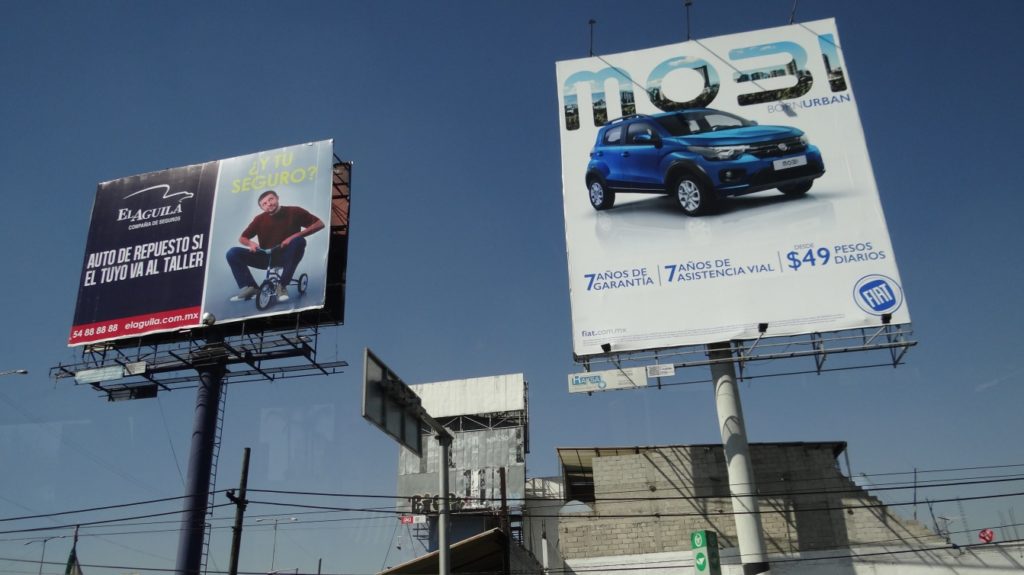OOH in Mexico, or Observations on Vacation
[vc_row type="in_container" full_screen_row_position="middle" scene_position="center" text_color="dark" text_align="left" overlay_strength="0.3" shape_divider_position="bottom"][vc_column column_padding="no-extra-padding" column_padding_position="all" background_color_opacity="1" background_hover_color_opacity="1" column_shadow="none" column_border_radius="none" width="1/1" tablet_text_alignment="default" phone_text_alignment="default" column_border_width="none" column_border_style="solid"][vc_column_text]Winter in December didn't start very promisingly, gray and dull.
In January some snow fell, so everything became prettier, but I still decided to spend my winter vacation in warmer regions, so I went to Mexico. The first stage of the journey was Paris. A few hours at Charles de Gaulle airport, which I spent waiting for the next plane, was of course also an observation of advertisements. Not surprising, after all I've been working in this industry for 15 years.
Digital displays shaped like smartphones have been installed by JCDecaux in the main communication corridors. This company's advertisements, mainly in the form of various types of billboards, are also present in Poland near Okęcie airport.
After 12 hours of flight, finally Mexico. First impression of the capital? The language of conversations and signs has changed, from now on Spanish is mandatory. At the airport in Mexico City, I noticed two advertisements. The first was in the form of a very nicely illuminated light box placed in one of the corridors, while the second was an advertisement consisting of 9 digital screens forming a whole.


Being in the capital - Mexico City - for a few days, I observed that the majority of advertisements are rooftop structures or poles along the main roads of the capital. Advertisements come in various configurations, single and double-sided, and in different formats.


The decorations on all billboards were made of vinyl; I didn't see any paper decorations, nor any board that would be prepared for mounting such an exposure. The advertisements are illuminated by various types of light sources.
I also noticed a large LED display advertisement near one of the main roads in the vicinity of the city's main airport; from what I could observe, it was a Clear Channel advertisement. I learned from the internet that such a network exists and has different products. At bus stops and shelters, there's a CityLight network installed (picture below). The advertisements are very visible because the bus lanes are placed along the axis of the roadway.

In Mexico, there is a lot of advertising clutter and chaos, and you can observe that every potential space is used to build advertisements. Traveling around the country, I observed that advertisements and advertising structures are built near the entry roads to cities, while there are none at all along the main roads and highways between them. I also had the impression that advertisements outside built-up areas (illuminated by streetlights) are not lit.

I also encountered other forms of advertising, for example cars specifically designed for presenting messages. The appearance and quality of these cars leaves much to be desired, but there is clearly a demand for them if they are operational.

And finally - the McDonald's menu, mounted on the restaurant's window. From the perspective of Polish advertisements of this chain, the difference is definitely noticeable.

[/vc_column_text][/vc_column][/vc_row]

